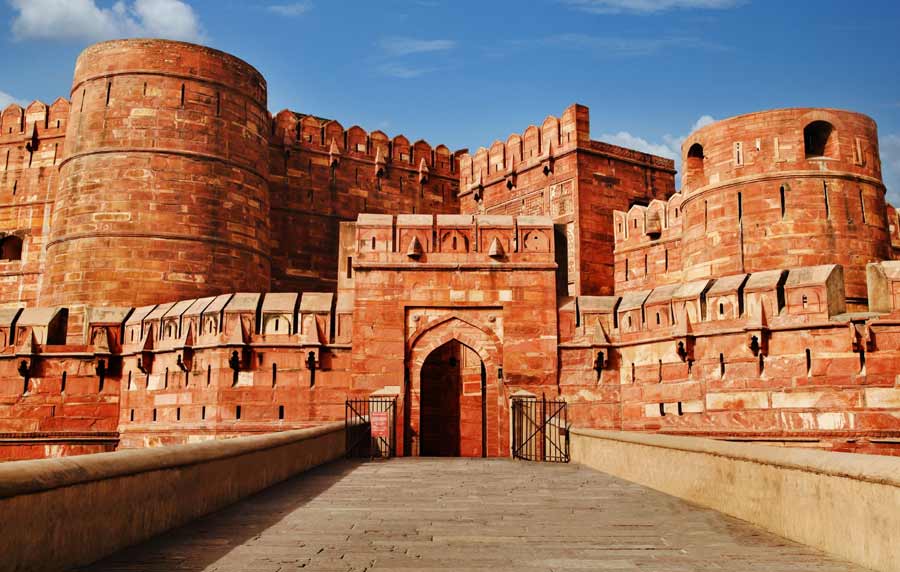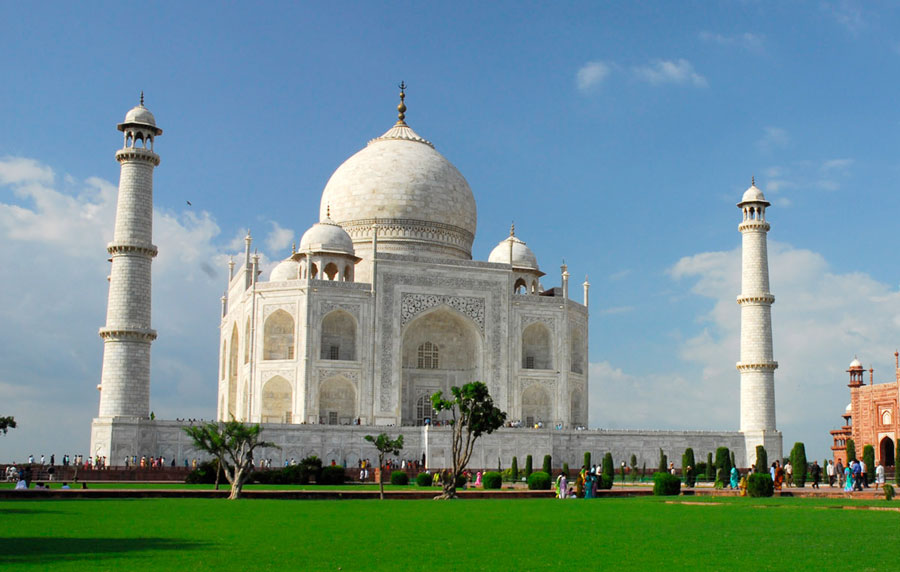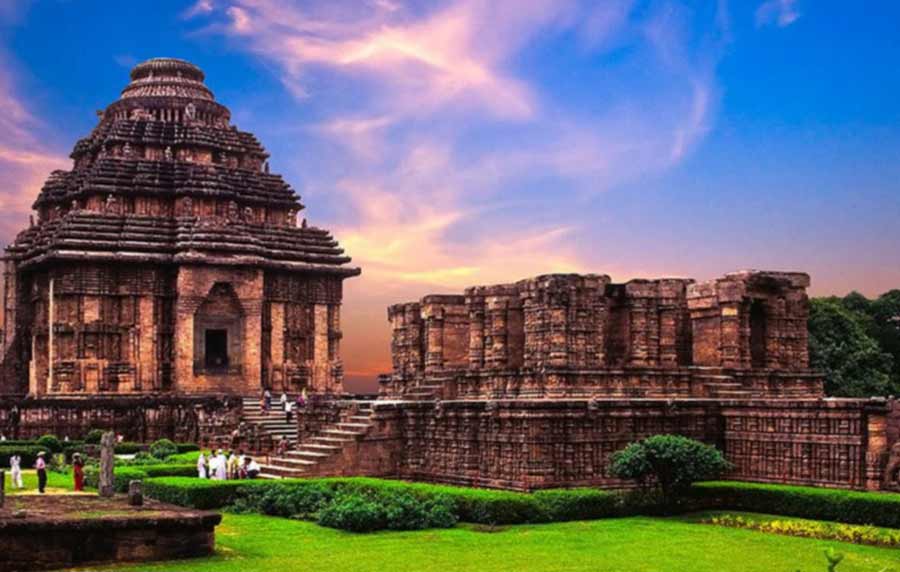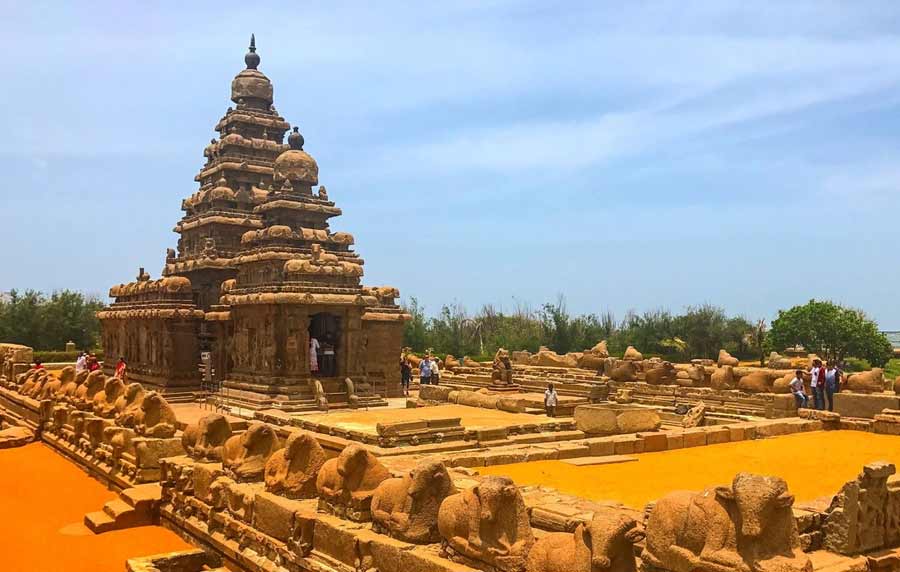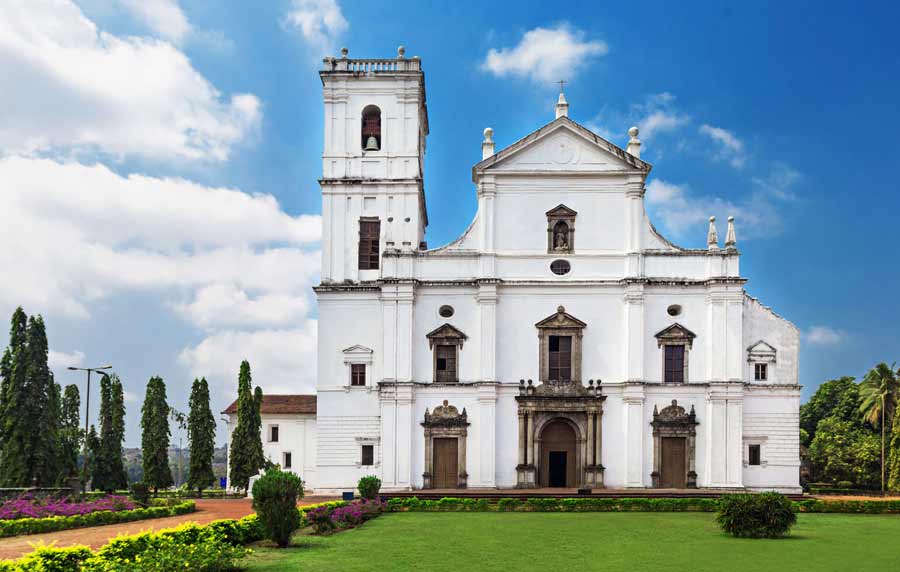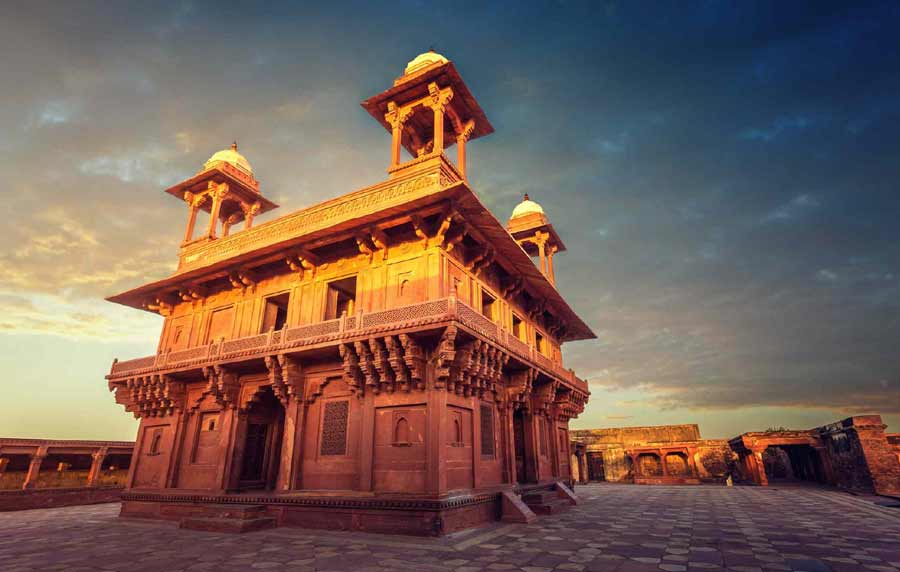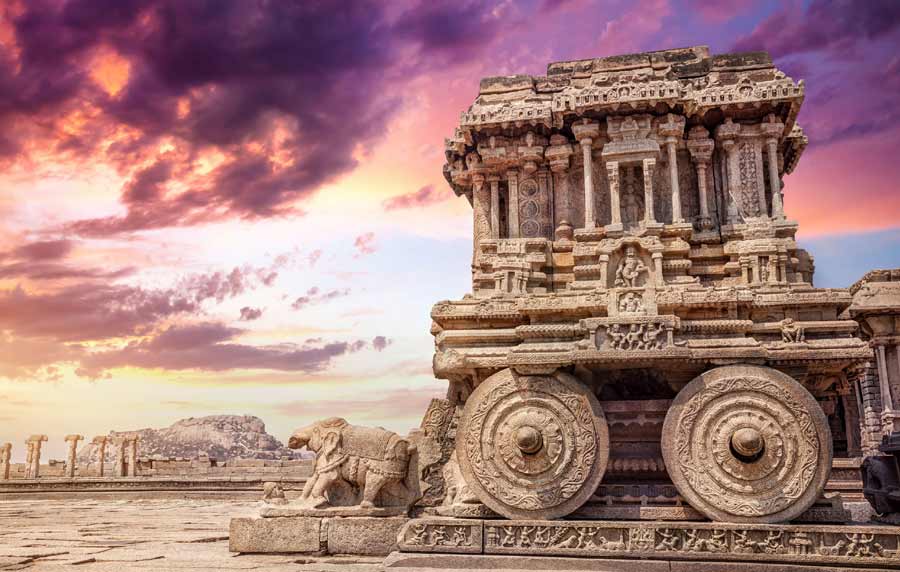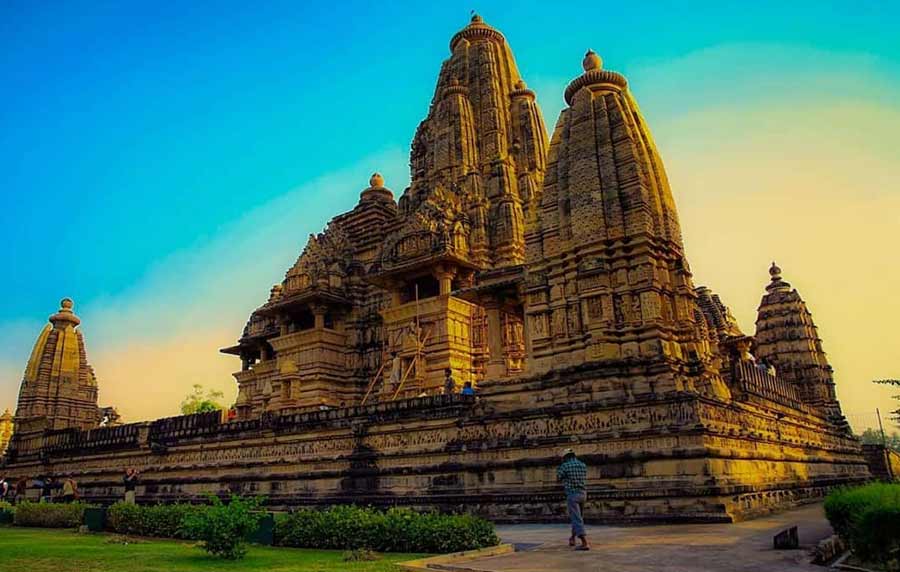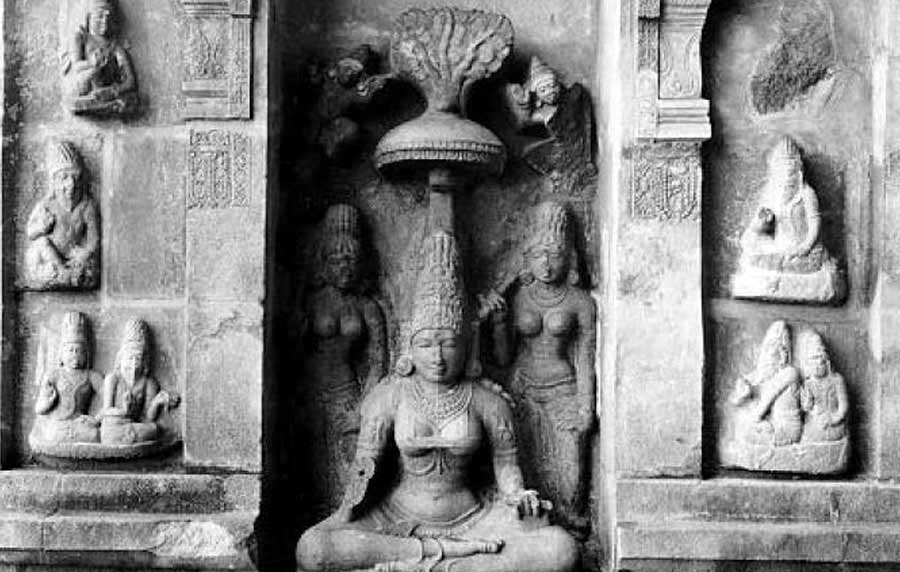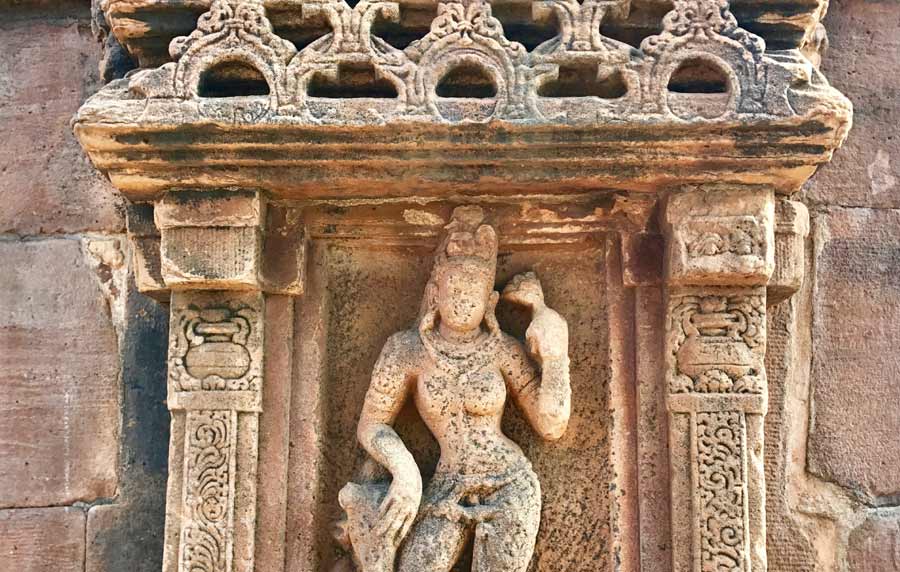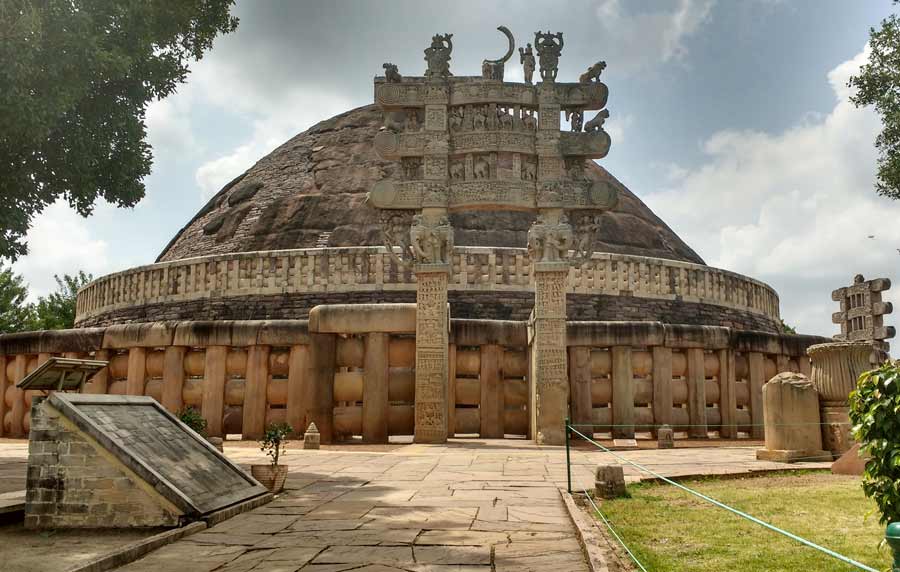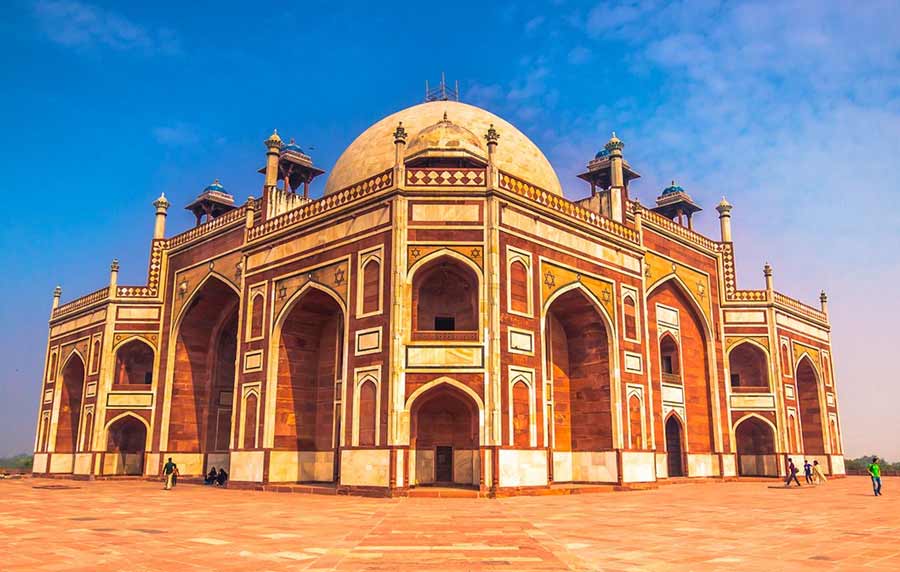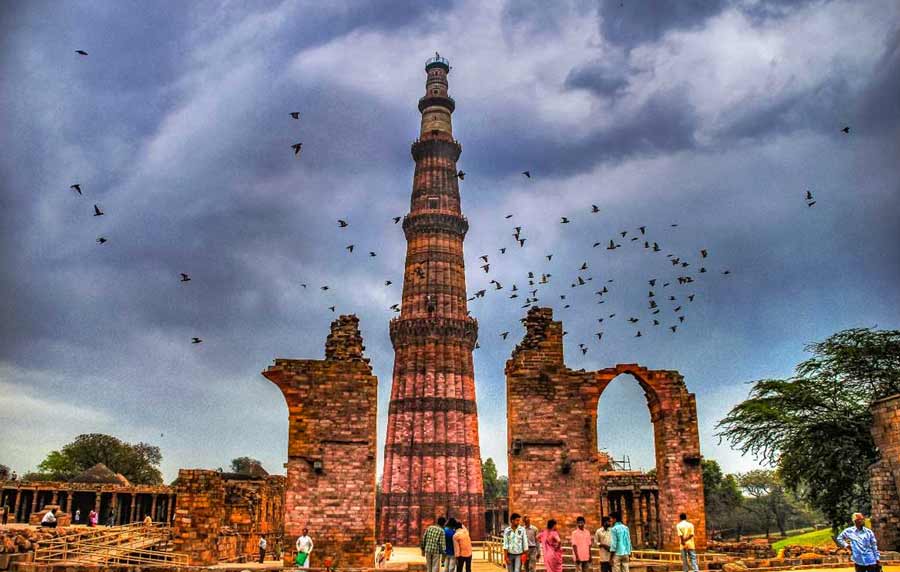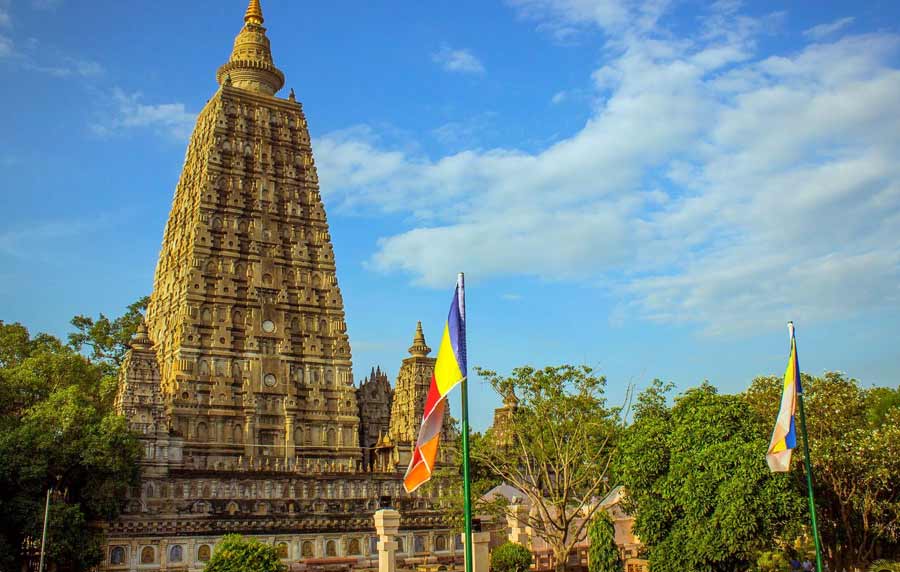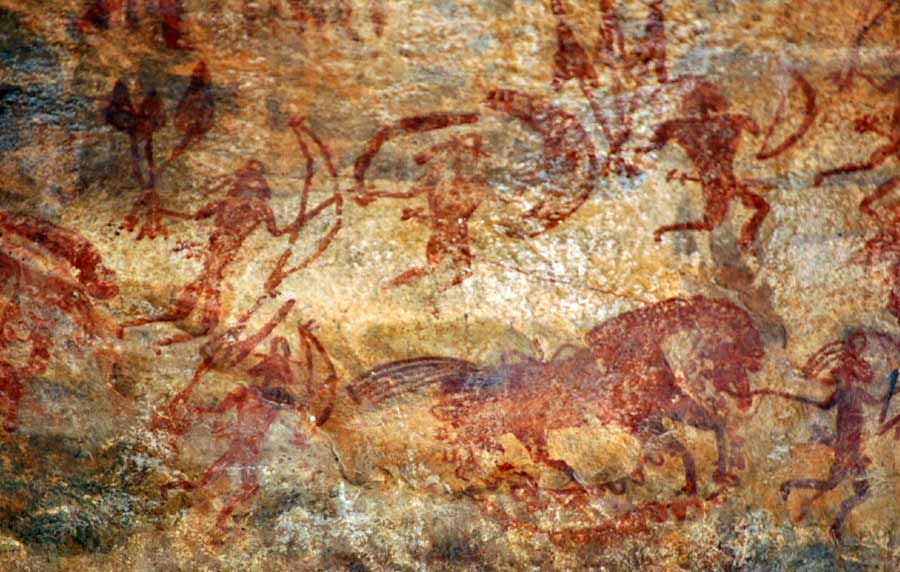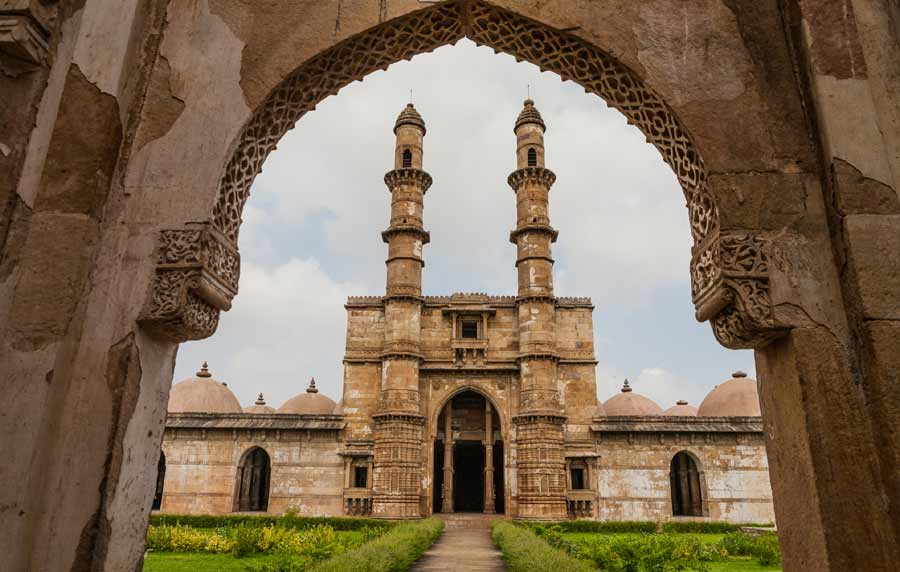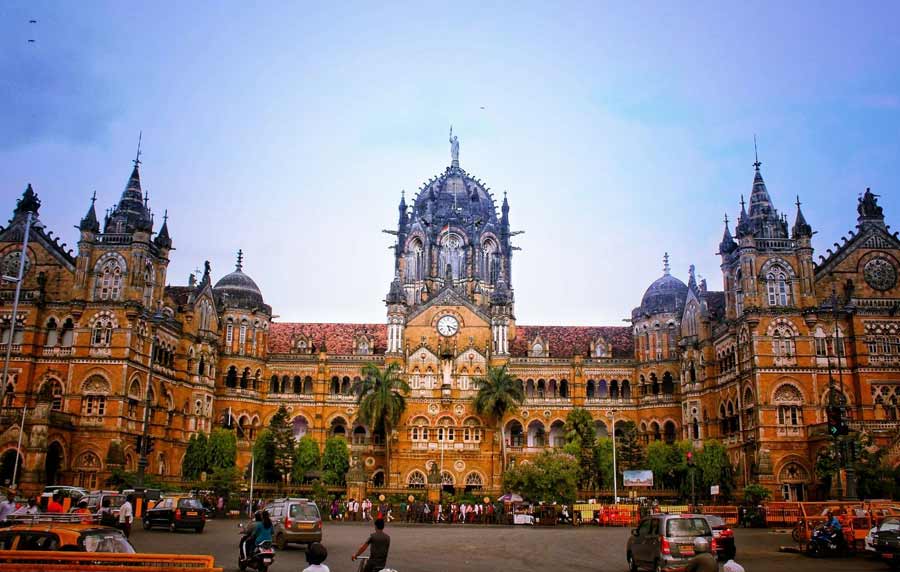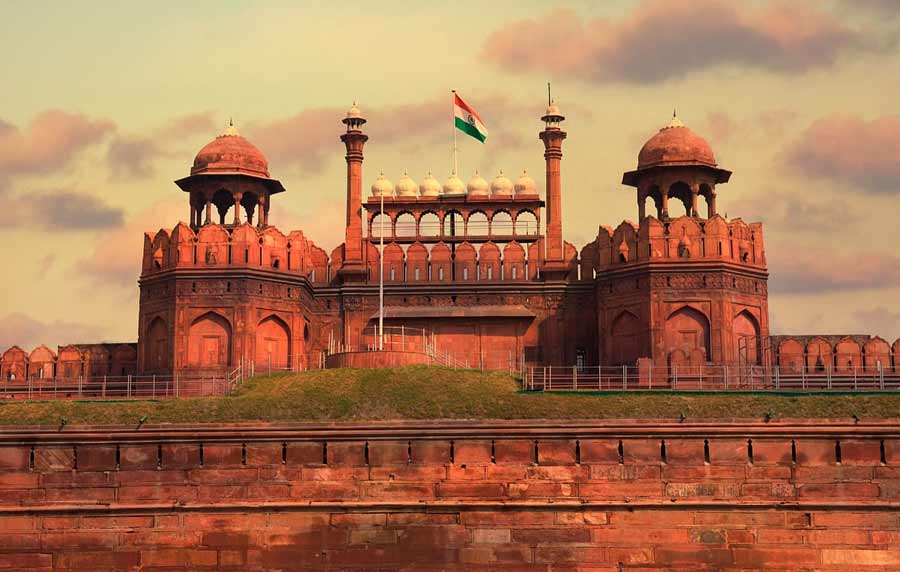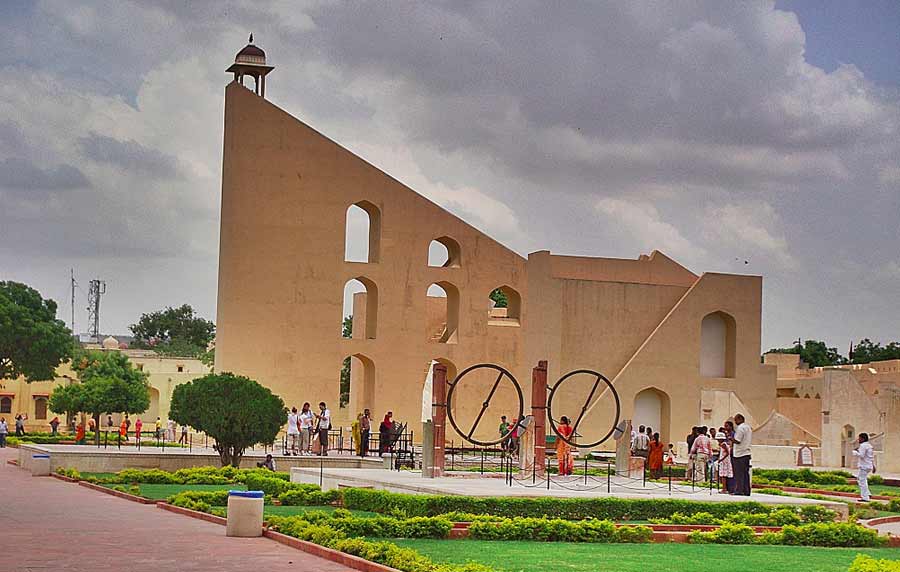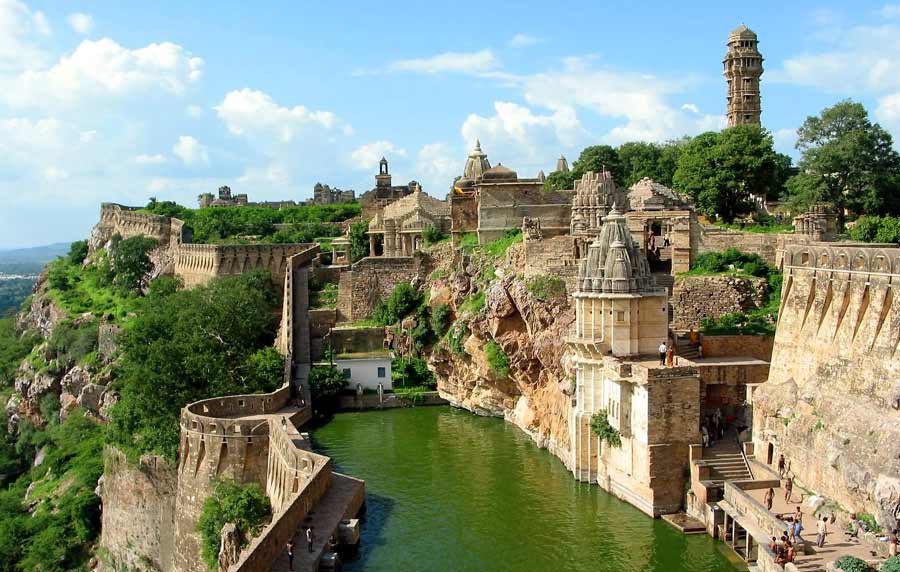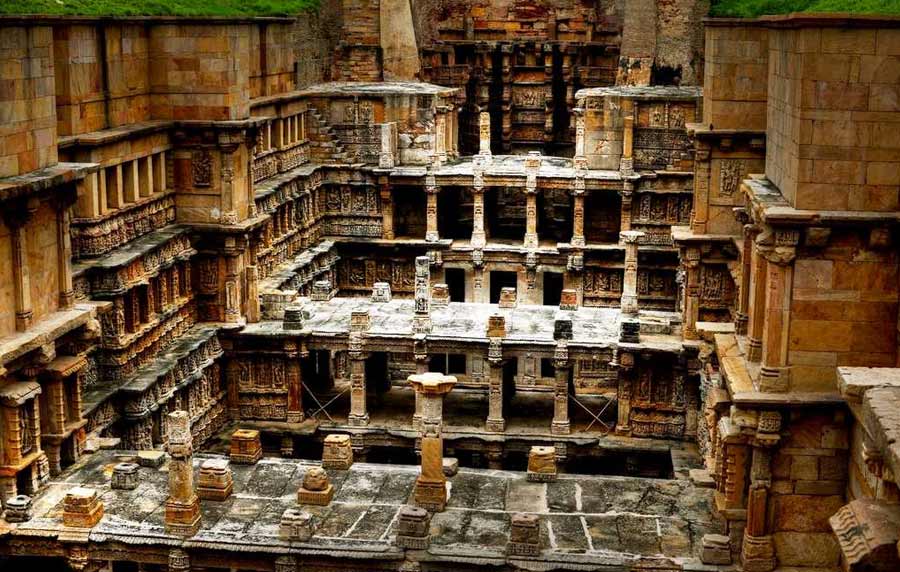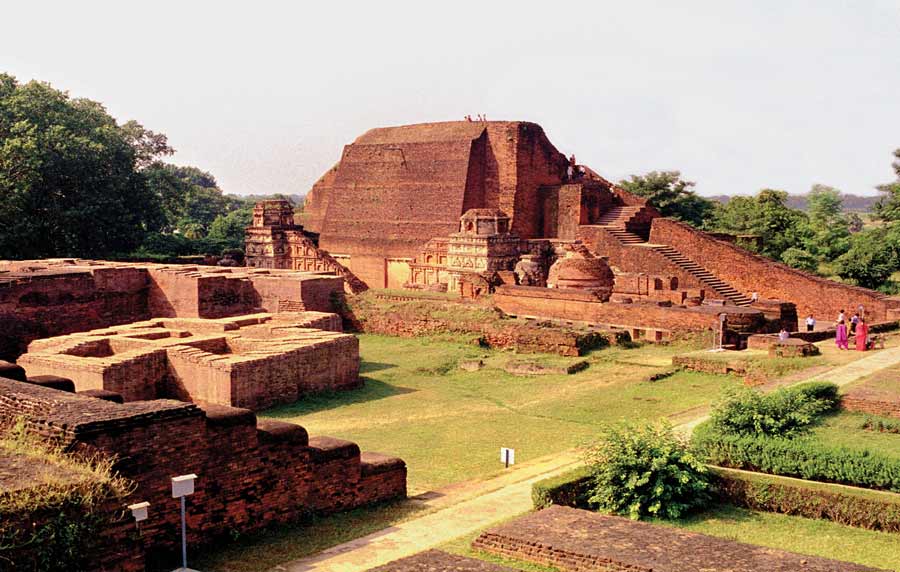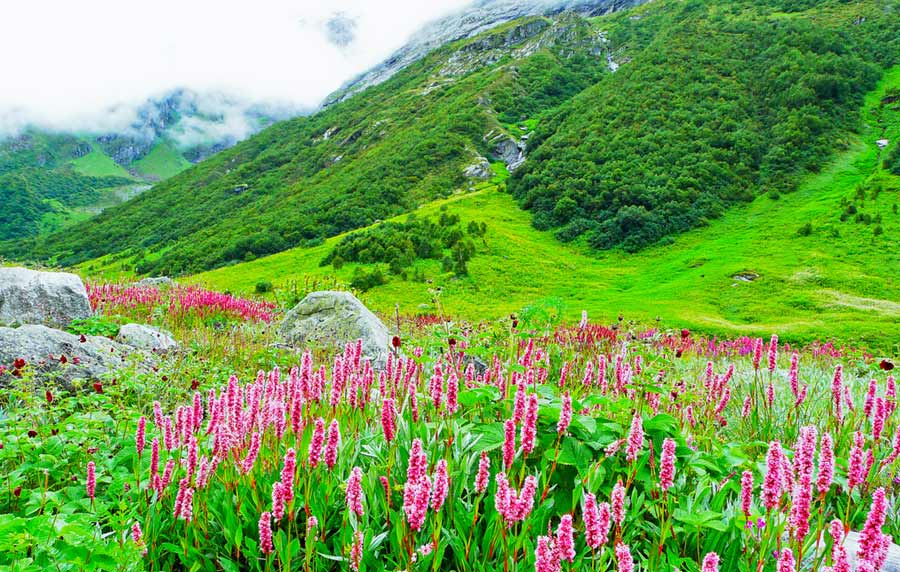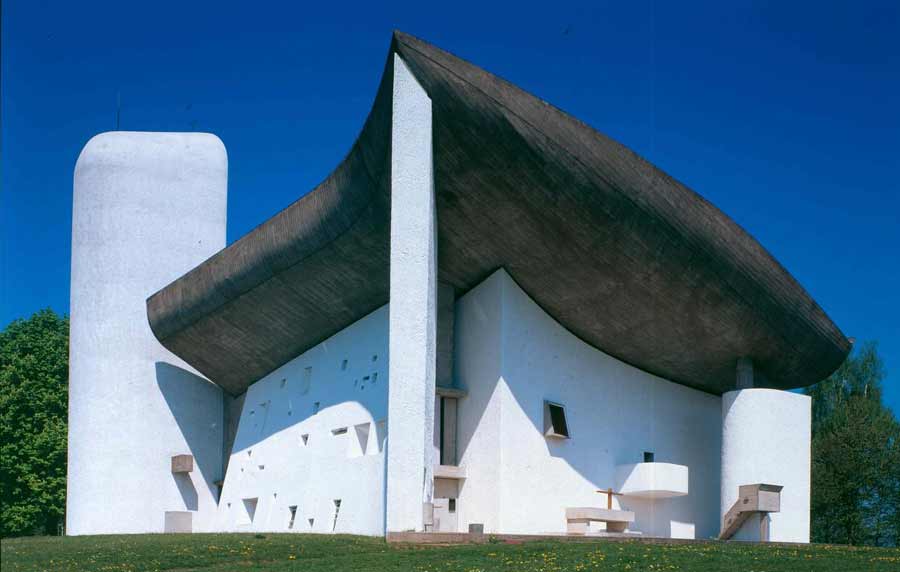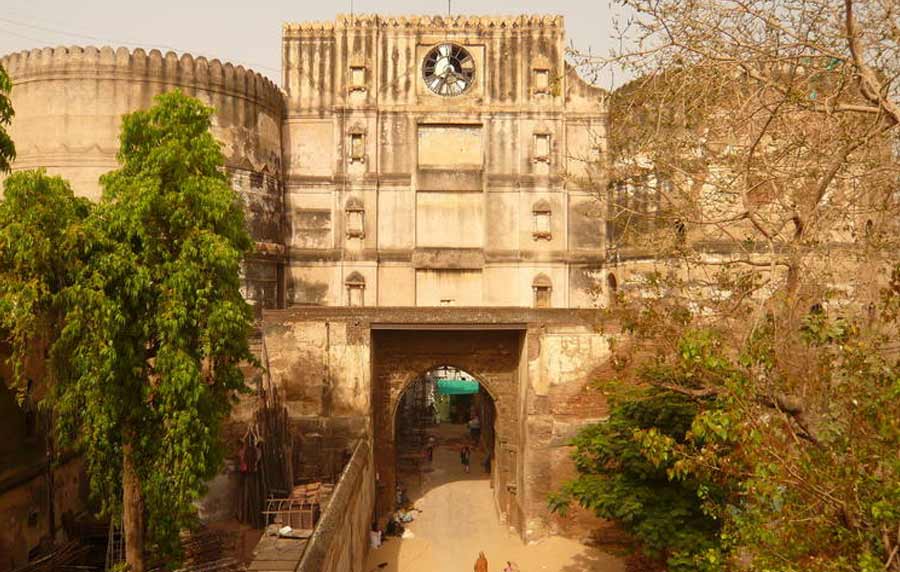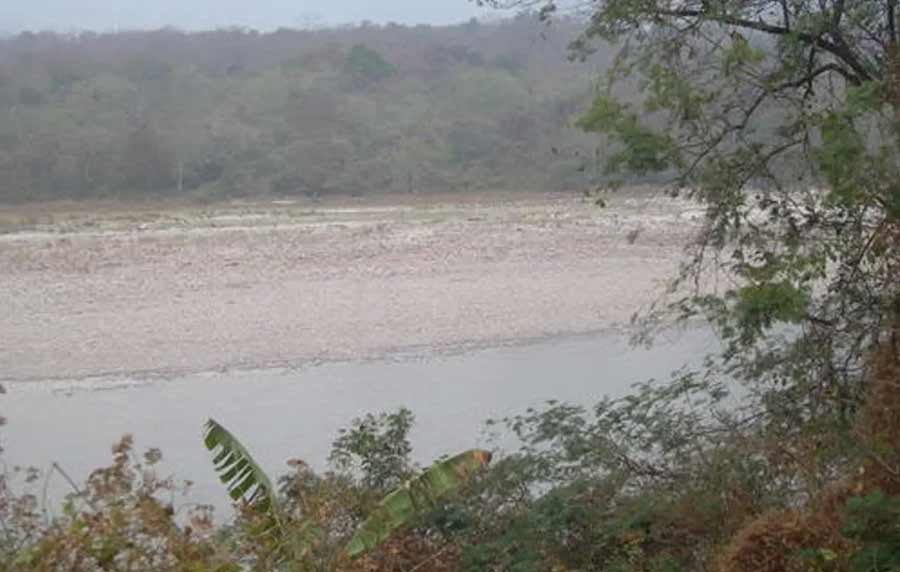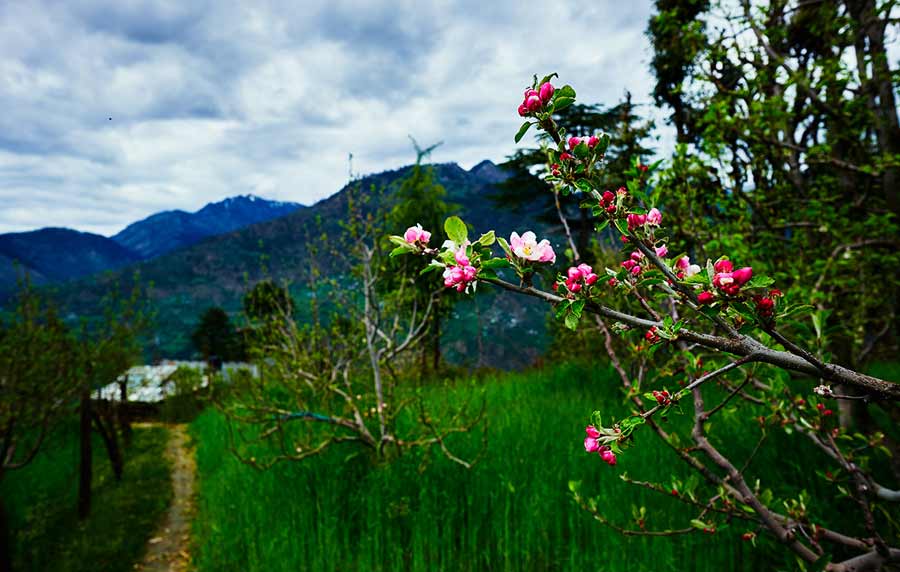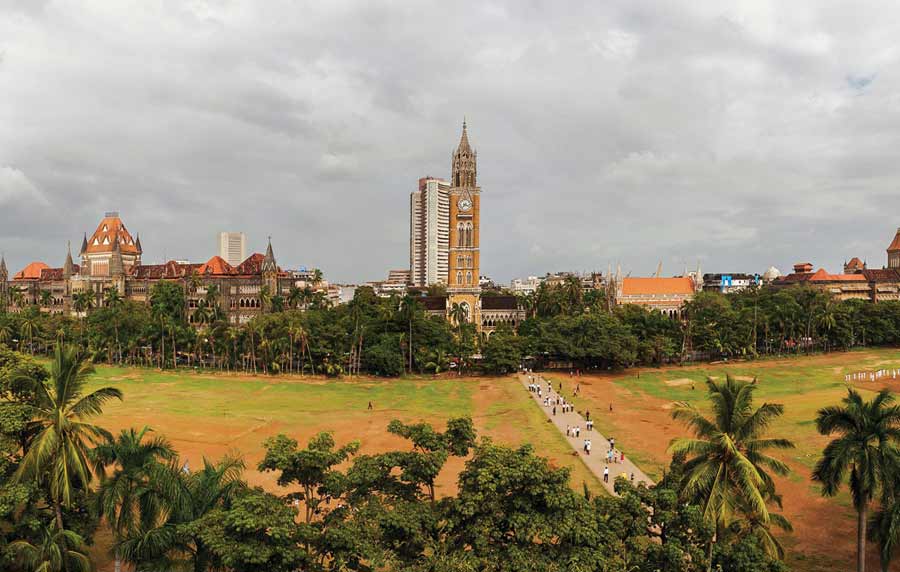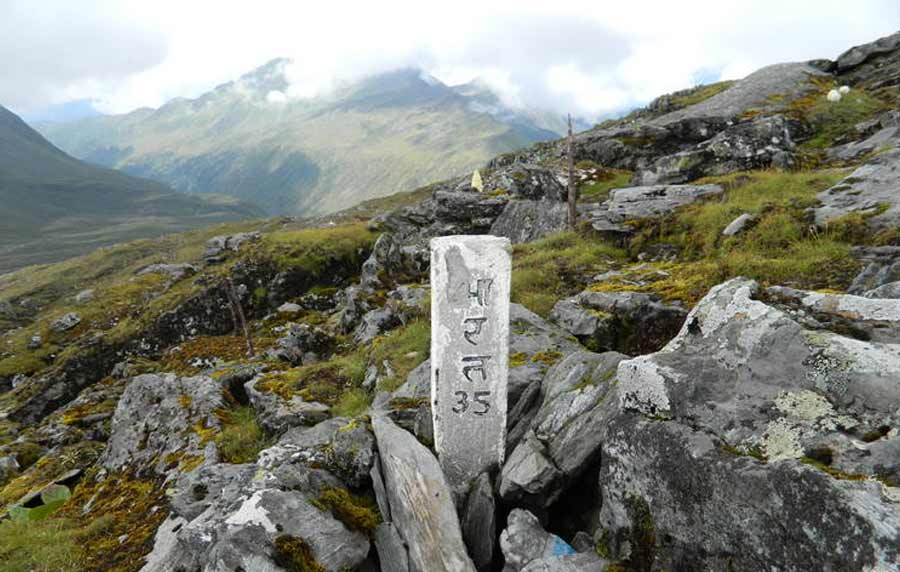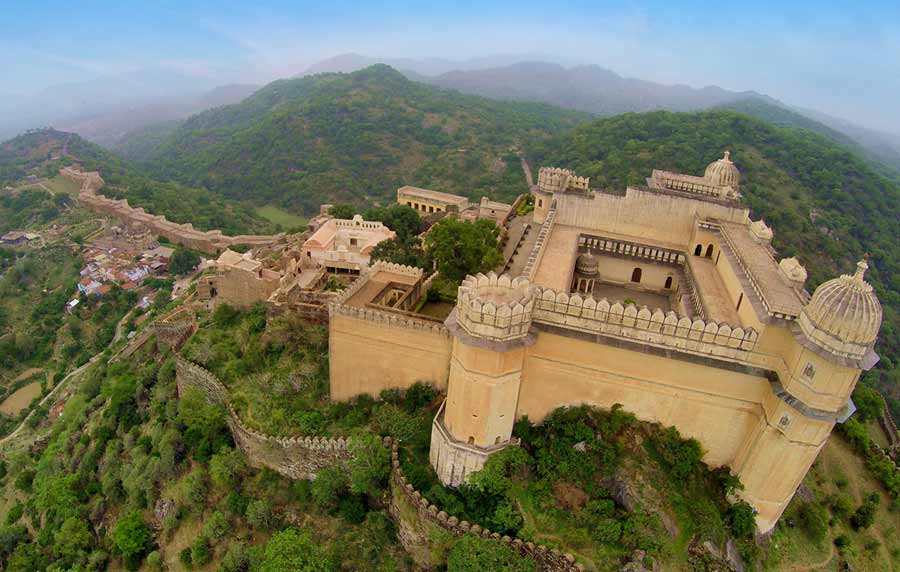Mahabodhi Temple Complex at Bodh Gaya
The Mahabodhi Temple, one of the few surviving examples of early brick structures in India, has had significant influence in the development of architecture over the centuries. balustrades, and the memorial column. The present temple is one of the earliest and most imposing structures built entirely from brick in the late Gupta period. The sculpted stone balustrades are an outstanding early example of sculptural reliefs in stone.
The Temple Complex has direct associations with the life of the Lord Buddha (566-486 BC) as the place where in 531 BC he attained the supreme and perfect insight while seated under the Bodhi Tree. It provides exceptional records for the events associated with his life and for subsequent worship, particularly since Emperor Asoka made a pilgrimage to this spot around 260 BC and built the first temple at the site of the Bodhi Tree. The Mahabodhi Temple Complex is located in the very heart of the city of Bodh Gaya. The site consists of the main temple and six sacred places within an enclosed area, and a seventh one, the Lotus Pond, just outside the enclosure to the south.
The most important of the sacred places is the giant Bodhi Tree (Ficus religiosa ). This tree is to the west of the main temple and is supposed to be a direct descendant of the original Bodhi Tree under which the Buddha spent his First Week and where he had his enlightenment. To the north of the central path, on a raised area, is the Animeshlochan Chaitya (prayer hall) where the Buddha is believed to have spent the Second Week. The Buddha spent the Third Week walking 18 paces back and forth in an area called Ratnachakrama (Jewelled Ambulatory), which lies near the north wall of the main temple. The spot where he spent the Fourth Week is Ratnaghar Chaitya, located to the north-east near the enclosure wall. Immediately after the steps of the east entrance on the central path there is a pillar which marks the site of the Ajapala Nigrodh Tree, under which Buddha meditated during his Fifth Week, answering the queries of Brahmins. He spent the Sixth Week next to the Lotus Pond to the south of the enclosure, and the Seventh Week under the Rajyatana Tree currently marked by a tree.
UNESCO World Heritage Sites India
The United Nations Educational, Scientific and Cultural Organization (UNESCO) World Heritage Sites are important places of cultural or natural heritage as described in the UNESCO World Heritage Convention, established in 1972. There are 37 World Heritage Sites located in India. These include 29 cultural sites, seven natural sites and one mixed site. India has the sixth largest number of sites in the world. Recently, Orchha is enlisted in the tentative list of UNESCO. The Seventh Wonder of the World and a UNESCO World Heritage Site, Taj Mahal is not merely a site that brings us to the pages of history; it is an epitome of true love, brilliant architecture and artistic precision. The white-marble mausoleum was commissioned by Shah Jahan for his wife, Mumta Mahal, way back in 1632. And to complete the masterpiece it took about 22 years and as much as 20,000 artisans.
 +91 9799050299
+91 9799050299 


